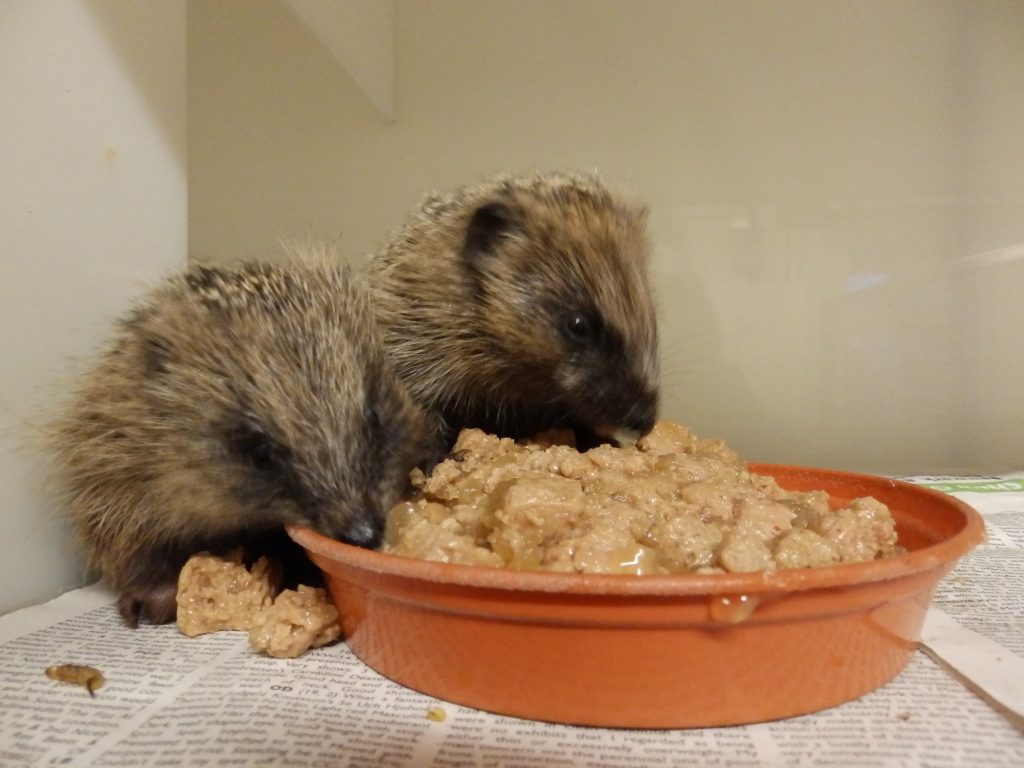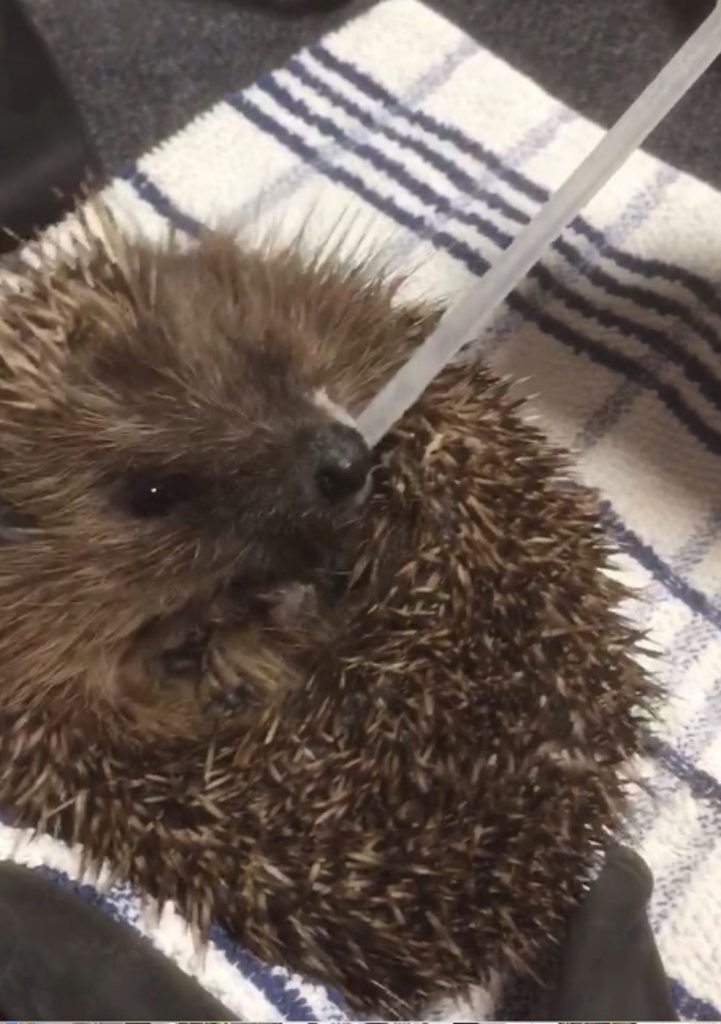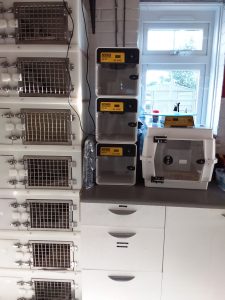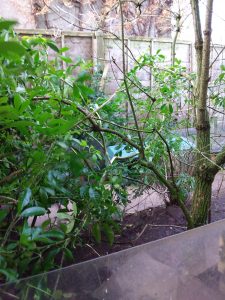Happy Hedgehogs at the Northumbrian Hedgehog Rescue Trust
Posted in News on 04 January 2022
We were contacted by the superb illustrator Daniel Weatheritt who, as well as creating the most delicious illustrations, completed his volunteer training for the Northumbrian Hedgehog Rescue Trust in his spare time. To help out this very worthwhile charity, we were happy to do some printing, and 500 hedgehog weight charts were delivered to the charity before Christmas. Daniel had told us that each hedgehog requires a daily weigh-in and supporting notes on food intake and meds. The Centre relies heavily on donations from the public, everything from newspapers and cleaning products to supplies of cat food and black soldier fly larvae calci worms.
As an animal-loving company, we wanted to know more, and thought that we could help by raising awareness of this charity which is working so hard to protect our rapidly declining hedgehogs. We interviewed the founder, Carole Catchpole to find out more about this special place:
Can you tell us a bit about why hedgehogs need our help?
Hedgehogs are now on the endangered list and, if we don’t do something to help, they may possibly be extinct in less than 20 years from now.
In 1950 there were 30 million hedgehogs in the country and we’re now down to less than one million.
When we moved to this house in 1979, we realised we had hedgehogs in the garden and started supporting them with food and water. One evening we sat watching 13 hedgehogs enjoying our hospitality. I no longer have any hedgehogs coming which is heart-breaking. I still provide food and water in the hope they will return but not very optimistic. It’s usually the birds who eat it in the morning.

How do you fund the care of your hedgehogs?
We rely totally on donations and fund-raising events to support the work we do. The latest accounts show the annual cost of running NHRT are £21,000 which is an incredible amount of money. We are a truly voluntary organisation and every penny given is spent on the hedgehogs – food, equipment, meds, and vet fees. All the volunteers, including myself, give our time freely for the love of hedgehogs. It is such a privilege to work with such an iconic animal and made a difference.
Can you tell us about a hedgehog that’s been particularly special to you?
There are so many hedgehogs which are memorable for various reasons. Fenton is one who came to us with a huge, open gash down his side from just behind one ear, down his right side to his bottom. Although our Vets have done some amazing surgery for us previously, we didn’t think for one minute they would be able to do anything but euthanise on this occasion. They rose to the challenge as they always do if there is a chance to save a hog’s life and sutured the wound together with instructions regarding aftercare. Dressings had to be changed daily. Quite a task for Carole but Fenton was very obliging and didn’t struggle or curl up when it came to cleaning the wound and applying the new dressing. It took many weeks before we felt positive about the results and Fenton now lives in one of our safe areas with other disabled hedgehogs as he has quite a strange gait and would struggle in the wild.
Walnut was about three weeks old when he was found. He only weighed 98g and had teeth so more than capable of eating on his own. He refused to co-operate and consequently was hand fed by Sheila for quite a while. His weight fluctuated considerably.
Poo samples were checked, and our usual worming protocol began. Initially he started to pick up and gain weight but then he suddenly stopped eating and, once again, was hand fed.
He would eat normally for a while and then refuse all food. Once more, Sheila began the cycle of hand feeding.
This was the scenario for quite a few months. We could only class Walnut as “failure to thrive”. We’ve now found something he loves which is a convalescence powder and is mixed with water. If he gets this drink every day, he eats normally and is now up to 524g. Walnut can never be released as he would not survive in the wild. He will spend the rest of his life in a safe garden where he can live as normal a life as possible.
The photo shows Walnut taking his daily convalescence drink, a complete food for animals.

Do you have any tips for what we can do in our own gardens to help hedgehogs?
People can do such a great deal to help hedgehogs in their own gardens with very little effort.
- Wild patches Leave some of the garden wild
- Garden Machinery Take great care & check an area before strimming or cutting long grass. Strimmers and lawnmowers mutilate!
- Compost Makes an ideal nesting site for a hedgehog so check carefully before removing any compost. Bags of compost may also have nesting hogs in them
- Bin Bags Never leave them on the ground as a hedgehog would see them as a great nest site and get taken away with the weekly rubbish collection.
- Bonfires Move the pile to another area before setting fire to it as it makes an ideal nest site for a hedgehog. Similarly, check Pampas grass before trimming or burning as hogs just love them as a nest.
- Ponds Hedgehogs can swim but will die of exhaustion if they cannot get out of a pond so, please provide either a ramp or stepping stones to allow a hedgehog to climb out of a pond if it accidently falls in then trying to get a drink of water. Paddling pools & sandpits are also a hazard if filled with water.
- Drains Or any holes in the ground should be covered, otherwise any wildlife can fall in and become trapped and unable to escape.
- Fences Leave a 13cm hole in fences to give hedgehogs access to several gardens. Ensure fences are well maintained as a broken fence could become a nest site for a hedgehog and may cause injuries in the process.
- Sheds Hedgehogs love to nest under sheds or decking – it’s warm and dry. If dismantling ensure there are no nesting hedgehogs underneath, especially between May & October when there may be a family there. If dismantling and wanting to burn the “rubbish” underneath do check it’s safe to do so. We had someone who brought us a Mum and 1 baby, both of whom suffered burns when doing exactly that. Presumably the rest of the family perished (hedgehogs normally have 4/5 babies) The people hadn’t realised there was a family of hogs under the shed and were distraught. Mum & daughter did recover eventually and were released back into the wild.
- Slug Pellets Metaldehyde slug pellets kill (and not only hedgehogs but have been known to kill family pets!) They also attract more slugs to your garden. Much better to use organic ones if you must but, if you have hedgehogs nearby you won’t need to use anything.
- Dogs If you have a dog with a dislike of any wildlife in its garden, it’s better to consider keeping the dog on a lead when in the garden during the evening.
- Food & Water Put out food (meaty cat food/biscuits) and water nightly to help support your hedgehogs.
- Netting Any netting, either pea support, football, tennis nets etc should be at least one foot off the ground to allow hedgehogs to go under it and not get stuck in it which can cause injuries.
What can we do to support the work you do at Northumbrian Hedgehog Rescue Trust?
You can support the work we do by encouraging people to go to our website for information, particularly if they have found a hedgehog they’re concerned about. We have a section headed “emergency” which people find helpful when they first come across a hedgehog and are not sure what is the correct procedure to follow.
We always welcome donations either monetary, items from our wish list, offering to help as a volunteer or become a release site for hedgehogs which, for whatever reason, cannot go back where they were found. This information is on our website www.hedgehogs-northumbria.org

A bank of cages plus 3 portable incubators – there are 6 of these (used when transporting hogs to enable maintaining their body temperature) and one permanent incubator (there are 5). The incubators are invaluable when a hedgehog first comes arrives especially if they have hypothermia.

Part of the safe garden for disabled/blind hedgehogs who are able to live life as naturally as possible in spite of their disabilities (amputees for example).